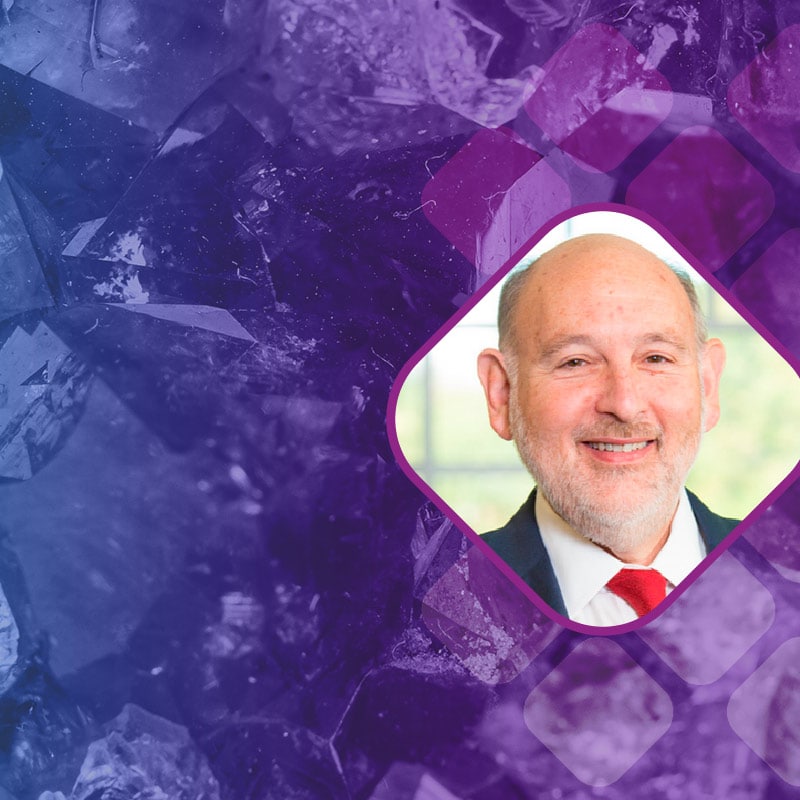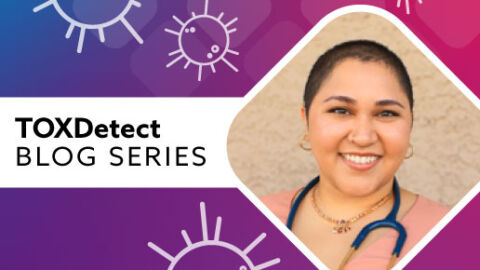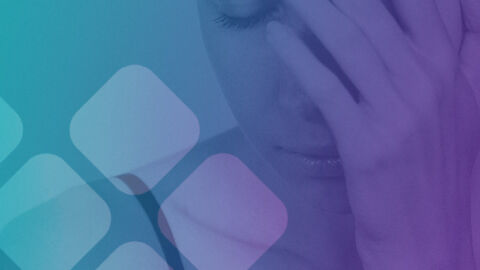As far as cosmologists can tell, there were only three elements present when the universe was first formed some 13.8 billion years ago: hydrogen, helium, and lithium. As one of the three original elements, lithium is found throughout our atmosphere. The sun, stars, and meteorites burn brightly with the flame of this highly reactive element. On earth, lithium remains a major mineral component of granite rock, and also lingers in significant amounts in sea water, mineral springs, and soils. Lithium has also found its way into our cell phones, electric cars, and holiday fireworks. Every organ and tissue in the human body contains the mineral lithium, with particular importance in brain health.
Today, we do not tend to think of lithium as an essential mineral in human physiology and its critical use for expanding technology. Lithium does not evoke visions of stars, peaceful rivers, or strong, healthy bodies. Instead images of lithium are associated with pharmacies, doctor’s offices, and back wards of psychiatric hospitals. Lithium is perceived, almost exclusively, as a dangerous drug used to treat severe mental illness with incapacitating side effects.
In a recent review in the New York Times titled “I Don’t Believe in God, but I Believe in Lithium,” author Jamie Lowe delivered a powerful testimony of her dramatic response to lithium – the drug that alleviated her mania and allowed her to live a normal, happy life. Her article also describes the kidney damage that has forced her to stop lithium and placed her on a waiting list for potential kidney transplant. She provides a unique insight into the life-changing prescriptive benefits of lithium, and the overwhelming fear she has of life without her lithium; a life without her sanity.
I have treated thousands of patients with similar backgrounds as Jamie’s. This raised the question, how can a medicine provide such life-changing effects on mental health yet cause permanent damage to kidney and often thyroid function?
Twenty-five years ago, I attempted to answer this question by looking for the lowest dose of lithium that would alleviate symptoms. Rather than basing my prescription dosage on a number from a lab test that dictated a “therapeutic blood level,” I listened to my patients. I began to see that patients on a lower dose of lithium – doses closer to the trace amounts found naturally in the environment – still experienced significant clinical results.
Psychiatry has much to learn from the untold story of one of its oldest drugs.
Lithium as Mineral
Lithium was given its official name by a Swedish chemist named Johan August Arfvedson in 1817. He isolated the element while studying petalite – a rich mineral deposit found in soils – on the remote island of Uto. The unique substance was named lithium after the Greek word lithos, meaning literally “from stone.”
Just one year after its initial discovery, researchers noticed that there was something special about this new element. Lithium ore, when ground into a fine powder, turned flames a bright crimson color that intensified to a dazzling white when burning strongly. In addition to being highly reactive, the metal was also lightweight, malleable, and a good conductor of heat and electricity. These characteristics made lithium an immediately desirable commodity for industrial and manufacturing purposes. Since this time it has been used for manifold applications: in aircraft parts, fireworks, heat-resistant cookware, focal lenses, and even the fusion material in power plants. Today, the mineral is most commonly used for building the lithium-ion batteries that power our cell phones, tablets, laptops, and eco-friendly vehicles.
Over the past two centuries, scientists have gained a deeper appreciation of this alkali earth metal, which is now known to be relatively common in the earth’s upper crust. As the 27th most abundant element, it can be found in rock sediments, salt flats, and mineral springs at varying concentrations throughout the globe. The largest deposits of lithium are salars, or vast saline basins in the deserts of South America. Lithium is also highly concentrated in clay beds and hard rock underground mines dotting Australia, China, and some parts of North America.
Lithium is in fact so ubiquitous in these environments that it can readily be found in food and water supplies. The US Environmental Protection Agency has estimated that the daily lithium intake of an average adult ranges from about 0.65 mg to 3 mg. Grains and vegetables serve as the primary sources of lithium in a standard diet, with animal byproducts such as eggs and milk providing the rest. Lithium has even been officially added to the World Health Organization’slist of nutritionally essential trace elements alongside zinc, iodine, and others.
The most frequent source of lithium in the modern diet, however, is tap water. Depending on geographical location, drinking water contains substantial amounts of naturally occurring lithium. According to environmental surveys, water with high mineral content can translate to 2 mg or so of lithium per day.
There has been little research on the specific consequences of lithium deficiency in humans. However, trials in which animals have been put on low-lithium diets have revealed a gross decrease in reproductive function, lifespan, and lipid metabolism. It is quite possible that lithium deficiency has many other effects on human physiology, but the study of nutritional lithium has been overshadowed by the volatile reputation of high-dose pharmaceutical lithium.
Lithium as Medicine
Official documentation of the medical applications of lithium was first publicized by London doctor Alfred Baring Garrod, who used it to treat patients with gout. After discovering uric acid in the blood of his patients with gout, he wrote about pioneering the use of lithium in his 1859 treatise, The Nature and Treatment of Gout and Rheumatic Gout. Between the 1850s and 1890s, several other physicians experimented with lithium treatment because at the time uric acid was viewed as a critical factor in many diseases.
Both the medical literature and popular advertisements of the time abounded with praise for lithium. The Sears, Roebuck & Company Catalogue of 1908 advertised Schieffelin’s Effervescent Lithia Tablets for a variety of uric acid afflictions. By 1907, The Merck Index listed 43 different medicinal preparations containing lithium. Even soft drink entrepreneur Charles Leiper Grigg understood that there was something special about lithium. In 1929, he unveiled a drink called Bib-Label Lithiated Lemon-Lime Soda with the slogan “It takes the ouch out of the grouch.” Hailed for improving mood and curing hangovers, this product was eventually rechristened 7 Up. The “7” supposedly represents the rounded-up atomic weight of the element lithium (6.9), and the “Up” suggests its power to lift spirits. Lithium remained an ingredient of 7 Up until 1950.
An Australian psychiatrist, Dr. John Cade, is credited with first experimenting with high doses of lithium citrate and lithium carbonate as a treatment for manic depressive illness in 1949. He observed first in animals and then in human trials that lithium stabilized mood, restored memory, and improved cognitive function, even in his most challenging subjects. Because of his well-structured study and the dramatic results, some historians of medicine consider that Cade ushered in modern psychopharmacology.
Unfortunately, the timing of Cade’s treatment successes was ill fated. The very same year, 1949, adverse reaction reports surfaced in the media about patients who were taking lithium chloride in the US. As physicians encouraged patients with heart disease and hypertension to avoid sodium chloride, lithium chloride was marketed as an alternative to sodium chloride in four different preparations: Salti-salt, Milosal, Foodsal, and Westsal. In the late 1940s and early 1950s, physicians around the country released reports of patients who developed lithium poisoning after they had used large, uncontrolled amounts of Westsal. Several deaths were also reported, leading the FDA to ban the use of lithium salt substitutes. “Stop using this dangerous poisoning at once!” exhorted the FDA. Lithium fell out of favor in the American medical community.
Despite this lithium chloride debacle, trials testing the efficacy of lithium carbonate for mania continued in Australia and France. Eventually the research from other countries became so compelling that by the end of the decade, a “lithium underground” had formed of US physicians prescribing lithium in the absence of official FDA approval. Finally, the FDA sanctioned lithium in 1970 as a new investigational drug for use in treatment of acute mania. By this time many other countries had already approved lithium, including France, the UK, Germany, and Italy. In 1974, lithium was finally approved to prevent recurrent mania.
Since the official FDA approval of pharmaceutical-dose lithium, the mineral has proved to be one of the most versatile and successful drugs in psychiatry. According to treatment guidelines, lithium carbonate is recognized as the first-line therapy in patients with bipolar disorder. Recent meta-analyses underscore the superiority of lithium as a prophylactic for both mania and depression. Lithium’s effectiveness in suicide prevention has also been demonstrated. While antidepressants may treat depression, they often exacerbate symptoms of agitation, restlessness, irritability, and anger that can lead to impulsivity and aggression. Lithium, by contrast, has specific effects against suicide that are independent of mood stabilization. Substantial literature also exists to support the use of lithium in a broad spectrum of other neurological conditions including substance abuse, violent and aggressive behavior, ADHD, and cognitive decline.
The pharmacological mechanisms under which lithium operates have yet to be understood in totality, although many well-supported hypotheses exist. It appears that lithium functions in two central ways in the body’s neurochemistry: repairing damaged neurons and stimulating neuronal growth. Proposed mechanisms for lithium’s effect on balancing mood include the altering of dopamine, glutamate, and GABA levels in the synapses as well as modulation of secondary messenger pathways that effect neurotransmission, including the adenylyl cyclase system, cAMP signaling pathway, and phosphoinositide system. Accumulating evidence has shown that lithium’s diverse neuroprotective actions involve direct changes in the expression of multiple genes.
It was once believed that genes were destiny. Scientists and clinicians held fast to the idea that a fixed genetic code was hardwired in humans at conception, and that mutations were a sure predictor of disease. However, it is now known that environmental factors have a profound influence on the ways in which genes are expressed. The study of epigenetics has revealed that lifestyle factors, including physical activity, learning, stress exposure, and pharmacological compounds, can essentially switch genes on or off. The mineral lithium is a powerful epigenetic factor. Key epigenetic mechanisms include histone modifications and changes in DNA methylation. Lithium works in both of these channels and has been shown to influence the expression of over 50 different genes. Working in these epigenetic pathways, lithium supports a wide range of neuroprotective and neurotrophic actions that literally change brain physiology.
Low-Dose Lithium
I believe that lithium is the most effective medication in psychiatry. Psychiatrists over the years have been hesitant to prescribe lithium because it is toxic at pharmaceutical doses. Concerns about side effects and toxicity are nonexistent when lithium is used as a nutritional, low-dose supplement. The untapped potential of low-dose lithium in psychiatry has implications for dramatically changing clinical practice with a safe, integrative strategy for the treatment of mental illness.
I have treated children as young as 4 years old and adults in their 70s with low-dose lithium. Here are a few examples of the hundreds of patients in whom this treatment has been successful.
A 4-year-old boy, Peter, had severe ADHD. Even at this young age, he was shunned by other children, and his parents were asked to remove him from preschool. It was easy to observe his aggressive behaviors in my office. A trace mineral analysis from a hair sample revealed no detectable lithium. I prescribed 250 mcg of lithium in liquid form. Peter’s annoying aggressiveness diminished. He became able to make friends, and eventually he began to participate cooperatively with other children in a new preschool.
Shawn at age 8 was often in trouble for bullying. Although he had been diagnosed with ADHD, stimulants had not been helpful. His trace mineral analysis showed no detectable lithium. On 2 mg of lithium orotate, he showed significant improvement, and he lost interest in bullying other children.
A 20-year-old patient, Amy, was diagnosed with bipolar disorder. She had been doing better on Depakote, although she continued to have anger outbursts and uncontrolled rages. Although she had once been on prescription lithium, she had experienced side effects that prevented ongoing use. I prescribed 10 mg of lithium for her in conjunction with the Depakote. Her condition improved so much that she was able to leave a therapeutic boarding school to return home.
A middle-aged man named Brian made an appointment with me to talk about his problems with anger and irritability. I had no trouble imagining these problems, as I was unavoidably 15 minutes late in calling him to my office. He berated me for most of the session, and I later heard that he had been verbally abusive with my staff. Brian, I learned, had suffered from depression and was currently taking an antidepressant, but his irritability remained. His wife reported that his road rage escalated to such intensity that he would get out of the car and yell at other drivers. I added 10 mg of lithium to Brian’s antidepressant treatment. Both he and his wife later reported that his simmering road rage subsided to nothing more than mild frustration.
The case of my patient Patricia was revealing by all of my assessment strategies: clinical history, family history, and trace mineral analysis. A 43-year-old therapist, she had been diagnosed at age 18 with depression and alcohol abuse. I learned from her story that her family of origin was deeply impaired by alcoholism. Patricia had been taking an antidepressant and had worked hard at maintaining her sobriety for 10 years. She came to me for enhanced support, as she complained that she was a “dry drunk,” clinging to “white-knuckle sobriety.” She felt chronically irritable. Trace mineral analysis revealed some level of lithium in her hair, but it was low.
Six weeks after I prescribed 5 mg of lithium, Patricia came to my office in tears. She was partly joyful that she no longer felt a constant level of irritability, but she also realized with regret what it must have been like for her family to have tolerated her irritability and anger for such a long time.
In an effort to organize and disseminate the information of low-dose lithium, I have started to compile additional case studies and ongoing research efforts on the website www.lowdoselithium.org.
In 1970, one research study analyzed levels of organically derived lithium in the water of 27 Texan counties and compared them to the incidence of admissions and readmissions for psychoses, neuroses, and personality disorders at local state mental hospitals. Data from a 2-year period were collected and analyzed. The authors noticed a marked trend: the higher the lithium content in the water supply, the lower the rate of psychiatric illness in that county. This association remained significant even after correcting for possible confounding variables such as population density and distance to the nearest state hospitals.
A follow-up study in the same Texan counties looked at similar variables over a longer 9-year span. Researchers came up with almost identical results: the incidences of suicide, homicide, and rape were significantly higher in counties where drinking water contained little or no lithium, versus those with levels ranging from 70 to 170 mcg/L. Unsure if these striking findings were somehow unique to that geographical region, other researchers have sought to replicate the study template in other areas throughout the globe. Lithium water studies have now been repeated internationally at sites in Austria, England, Greece, and Japan. Overall the collection has revealed a strong inverse correlation between aggressive crime and suicide and supplemental levels of lithium in the water supply.
Another interesting finding came from a study that looked at lithium levels in the hair of criminals. Trace mineral hair analysis is one of the most accurate methods for testing long-term mineral status and is therefore highly advantageous for determining where deficiencies are present. This study found that violent criminals had little to no stores of lithium when tested via hair mineral analysis, bringing forth the idea that perhaps lithium deficiency was contributing to oppositional and aggressive behaviors.
The most fascinating research recently, however, has been on the use of lithium for Alzheimer’s disease. Given its being the only cause of death in the top 10 in America that cannot be prevented, cured, or slowed, researchers are spending billions of dollars on Alzheimer’s disease. There is a fast-growing community of researchers suggesting that lithium may provide significant benefits in the treatment and prevention of Alzheimer’s.
Lithium has been shown to disrupt the key enzyme responsible for the development of amyloid plaques and neurofibrillary tangles associated with Alzheimer’s disease. This enzyme is glycogen synthase kinase-3 (GSK-3), a serine/threonine protein kinase that is important in neural growth and development. Notably, specific levels of GSK-3 are required to carry out the synaptic remodeling that drives memory formation.
In Alzheimer’s disease, GSK-3 becomes hyperactive in the areas of the brain controlling memory and behavior, including the hippocampus and frontal cortex. This upregulation spurs GSK-3 to phosphorylate, or activate, amyloid-B and tau proteins in the neurons of these regions at an aberrantly high rate. Over time these proteins accumulate to create the signature plaques and neurofibrillary tangles that disrupt the brain tissue and result in symptoms of cognitive decline. Lithium works as a direct GSK-3 inhibitor to prevent this overexpression, halting inappropriate amyloid production and the hyperphosphorylation of tau proteins before they impair brain function.
In addition to protecting the brain from the development of plaques and tangles, lithium has been shown to repair existing damages brought about by Alzheimer’s disease pathogenesis. Lithium ions, for example, encourage the synthesis and release of key neurotrophic factors such as brain-derived neurotrophic factor (BDNF) and neurotrophin-3 (NT-3), which in turn stimulate the growth and repair of neurons. Patients on lithium have been found to have significantly higher gray matter volumes in the brain. One study has even directly demonstrated that damaged nerve cells exposed to lithium respond with increases in dendritic number and length.
In a recent trial published in Current Alzheimer’s Research, a nutritional dose of just 300 mcg of lithium was administered to Alzheimer’s patients for 15 months. When compared with the control, those on low-dose lithium showed significant improvements in cognitive markers after just 3 months of treatment. Furthermore, these protective effects appeared to strengthen as the study proceeded, with many of the lithium-treated individuals showing marked cognitive improvements by the end of the trial. These results suggest that lithium could be a viable treatment for Alzheimer’s disease when used at low doses over the long term.
Dr. Nassir Ghaemi, one of the more notable and respected advocates of lithium use in the medical community, recently published a review in 2014 in Australian and New Zealand Journal of Psychiatry summarizing the benefits of low-dose lithium therapy. Ghaemi and his colleagues performed a systematic review of 24 clinical, epidemiological, and biological reports that assessed standard or low-dose lithium for dementia along with other behavioral or medical benefits. Five of the seven epidemiological studies established a correlation with standard-dose lithium therapy and low dementia rates, while four other randomized clinical trials demonstrated that low-dose lithium yielded more benefit for patients with Alzheimer’s dementia versus placebo. Based on these findings, Ghaemi stressed that “lithium is, by far, the most proven drug to keep neurons alive, in animals and in humans, consistently and with many replicated studies.”
The Future of Lithium
Recognizing that nutrition is key to brain health is a fundamental premise of integrative medicine. Instead of focusing on just one type of intervention, integrative medicine tries to address all factors that may contribute to a mental disorder – bringing together nutritional supplements, medicines, psychotherapy, and lifestyle changes.
Lithium must be recognized as a critical component of nutritional assessments. Lithium is an underused nutritional supplement. The diverse neuroprotective mechanisms are truly remarkable. The scientific literature has shown that lithium modulates GSK-3, enhances the release of neurotrophic factors such as BDNF, and promotes epigenetic changes that resets the trajectory of mental illness. Lithium is powerful, reliable, cost effective, and, at low doses, completely safe.
With low-dose lithium, we have a safe nutritional supplement that is effective in treating a wide range of disabling symptoms of mental illness. Perhaps in the future, patients like Jamie Lowe, the author of the New York Times article, will not be forced to make a decision between mental and physical health. The compelling and growing scientific literature on the benefits of low-dose lithium therapy combined with over 25 years of clinical practice have convinced me that with low-dose lithium, it is entirely possible to have both.
References
- Bech P. The full story of lithium. Nord J Psychiatry. 2007;61(46):35–39.
- Cade JFJ. Lithium salts in the treatment of psychotic excitement. Med J Aust. 1949;2.
- Diniz BS, Machado-Vieira RM, Forlenza OV. Lithium and neuroprotectin: translational evidence and implications for the treatment of neuropsychiatric disorders. Neuropsychiatr Dis Treat.2013;9:493–500.
- Farah R et al. Lithium’s gene expression profile, a cDNA microarray study. Cell Mol Neurobiol. 2013;33:411–420.
- Mauer S, Vergne D, Ghaemi NS. Standard and trace-dose lithium: a systematic review of dementia prevention and other behavioral benefits. Aust N Z J Psychiatry. 2014;48(9):809–818.
- Nunes MA, Viel TA, Buck HS. Microdose lithium treatment stabilized cognitive impairment in patients with Alzheimer’s disease. Curr Alzheimer Res. 2013;10(1):104–107.
- Shorter E. The history of lithium therapy. Bipolar Disord. 2009;11(2):4–9.
- Schrauzer GN. Lithium: occurrence dietary intakes, nutritional essentiality. J Am Coll Nutr.2002;21(2):14–21.
- Schrauzer GN, de Vroey E. Effects of nutritional lithium supplementation on mood. Biol Trace Elem Res.1994;40:89–101.
- Schrauzer GN, Shrestha KP. Lithium in drinking water and the incidences of crimes, suicides and arrests related to drug addictions. Biol Trace Elem Res. 1990;25:105–113.
- Strobasch AD, Jefferson JW. The checkered history of lithium in medicine. Pharm Hist.1980;22(2):72–76.
- Young AH, Hammond JM. Lithium in mood disorders: increasing evidence base, declining use? Br J Psychiatry 2007;191:474–476.
- Young W. Review of lithium effects on brain and blood. Cell Transplant. 2009;18:951–975.





